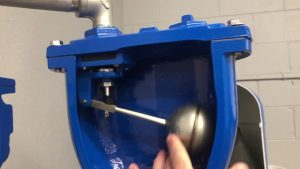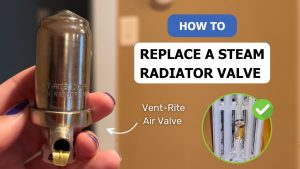Before we use the cast steel gate valve for the first time, it is necessary to check whether the cast steel gate valve is qualified or not. However, many people do not know how to troubleshoot in the testing process. Today we will introduce it to you.
Ⅰ. Structural characteristics and advantages of Cast Steel Gate Valve
- (1) The cast steel gate valve has a reasonable design, reliable sealing, smooth channel, and small flow resistance coefficient.
- (2) The gate plate and valve seat sealing surface of cast steel gate valve are made of iron-based alloy surfacing welding or Stellite cobalt-based hard alloy surfacing welding, which has good wear resistance, high-temperature resistance, corrosion resistance, scratch resistance, and long service life.
- (3) It adopts a wedge-type elastic gate or rigid wedge-type single gate structure, the rolling bearings are installed in medium and large diameters. It has a flexible switch that is easy to open and close.
- (4) The valve stem of the cast steel gate valve has good corrosion resistance, abrasion resistance, and wear resistance after tempering and surface nitriding treatment.
- (5) It can adopt various piping flange standards and flange sealing surface types to meet various engineering needs and user requirements.
- (6) The valve body of the cast steel gate valve is complete, and the packing and gasket can be reasonably selected according to the actual working conditions or user requirements and can be applied to various pressure, temperature, and medium working conditions.
Ⅱ. Do internal cracks of the cast steel gate valve need to be repaired by welding?
First of all, we need to test the pressure in the water to detect test whether it is qualified or not. Sometimes, we will find some small cracks in the valve body that will affect the use effect of the cast steel gate valve. Therefore, it is necessary to fix these small cracks by welding.
When there is water inside the cast steel gate valve, it cannot be welded if the water inside is not cleaned out first. Also, this welding method is difficult because you have to completely drain the water before welding. It is best to use vertical seam welding due to its thicker welding part. In addition, the amount of cast steel gate valves on the market is very small. For a steel component, there is no cracking after welding.
It is also worth noting that normal welding rods can be used when welding between cast steel and normal carbon steel (such as low-carbon steel). Stainless steel must be matched with welding rods.
ZECO has developed its laboratory for R&D for international standard valve design innovation and validation, including PT, MTUT, and FE testing. ZECO is a modest and united team with more diligence and enterprising to show integrity to customers. If you have any need, welcome to consult us.
How to Weld Cast Iron vs. Cast Steel
Stick welding is a great process to weld cast steel because you have high control over the welding heat. It’s great for quick repairs and fieldwork. Furthermore, it is the best process to weld metals with dirty surfaces.
How to Weld Cast Iron?
If you’re going to tackle welding cast iron, take the following four steps before welding:
- Identify the alloy
- The three primary grades of cast iron include gray iron, ductile iron, and malleable iron. Note that there is also white cast iron, but most agree it’s impossible to weld it successfully.
- Gray iron is the most common form of cast iron, presenting a challenge for welders when the graphite flakes enter the weld pool and cause weld metal embrittlement.
- Ductile and malleable iron are less brittle because of their microstructural differences. Both have spheroidal carbon microstructures from their manufacturing processes.
- Clean the casting thoroughly
- Castings need to be properly prepared before welding. Remove any paint, grease, oil, and other foreign materials from the weld area. Then apply heat carefully and slowly to the weld zone for a short time to remove trapped gas in the base metal.
An oft-used technique to test the cleanliness of the surface is to deposit a weld pass on it. If impurities remain on the iron, the weld will be porous. You can repeat the process until porosity is no longer present.
- Castings need to be properly prepared before welding. Remove any paint, grease, oil, and other foreign materials from the weld area. Then apply heat carefully and slowly to the weld zone for a short time to remove trapped gas in the base metal.
- Preheat the casting
- The main reason for controlling the heat is thermal expansion. When metal is heated, it expands. If the entire object warms and expands at the same rate, there is little stress. However, it creates stress and cracking when the heat is localized in a relatively small heat-affected zone (HZ). Preheating minimizes the thermal gradient between the casting body and the HZ, lowering the tensile stress caused by welding.
- Select a suitable welding technique
- Choose the welding technique that is most suitable for the iron alloy. The three most common processes are stick, oxy-acetylene, and braze welding, with the stick being the most popular.
- With stick welding, three primary filler electrodes work for cast iron: copper alloy, cast iron covered, and nickel alloy. The nickel alloy electrodes are quite popular for cast iron because the nickel-iron weld is stronger and has a lower coefficient of thermal expansion, reducing stresses and increasing resistance to cracking.
- Direct the electric arc at the weld pool instead of at the base metal. Doing this minimizes dilution. Use the lowest current setting approved by the manufacturer to help reduce heat stress. Preheat the pieces to at least 250°F before welding with copper or cast iron or electrodes. No preheating is needed with nickel electrodes.
How to Weld Cast Steel?
Learning how to weld cast steel is less of a challenge compared to cast iron. That’s because cast steel is carbon or alloy steel that has been melted and molded into a specific shape. However, even though cast steel has similar properties to rolled steel, some differences make it harder to weld.
Although you can weld cast steel using the MIG or TIG processes, many welding experts recommend stick welding with E7018 rods for low-carbon alloys and stainless-steel rods for hard-to-weld castings.
One of the issues with welding cast steel is avoiding distortion. Here are some suggestions to help with that:
- Preheat the casting: Castings can have irregular shapes, with thinner areas heating more quickly. Concentrate the heat on thicker regions.
- Tack weld frequently.
- Set to the lowest amperage that will produce a strong enough weld.
- Use the fastest traveling speed possible.
- Use fewer passes.
- Slow down the cooldown by wrapping it in welding blankets or burying it in the sand.
- A few more tips on how to weld cast steel successfully:
- Clean the edges to be welded down to the bare metal.
- Preheat cast steel if it has more than 0.40% carbon or it is low-alloy steel. Preheating to 250°F prevents hydrogen in the weld.
- If you weld in a cold environment, preheat low-carbon castings to 75°F.
- If you are repairing a crack, drill both ends (1/8″) and remove the crack by grinding or gouging.












